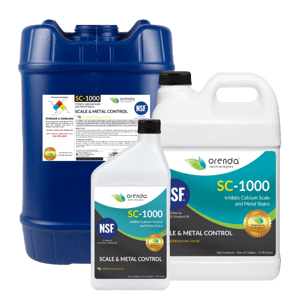Does SC-1000 work in cold water?
Neither chelating or sequestering agents work well in cold water. SC-1000 is no exception.
It depends on how cold the water is, but below 65ºF, no, SC-1000 does not work well in cold water. The activation time is slower in cold water, and at some point, the chemical stays dormant.
Related: How to use SC-1000
This is not unique to SC-1000, however. No sequestering agents that we know of work in cold water either. It is because of this temperature factor that we have the following advice for using SC-1000:
- If you have to add calcium, add SC-1000 to the dissolving calcium chloride because it gets hot when dissolving. Warm water in the bucket (or Orenda Startup Barrel™) will allow SC-1000 to activate quickly and chelate the calcium you are adding.
- No need to add SC-1000 when closing the pool. Many closing packages involve a sequestering agent, but not in our program. It's better to add SC-1000 in the spring when the water continues to warm up. The warmer the water, the better the SC-1000 works.
- Unless it's a startup, divide the purge dose over several visits to avoid wiping out free chlorine entirely. This has nothing to do with water temperature and everything to do with the fact that free SC-1000 that has not yet bound to metals/minerals will be attacked by chlorine. Since it's invulnerable to chlorine, chlorine is depleted in its attempt to oxidize SC-1000.
Related: How long after purging with SC-1000 will a pool be able to hold chlorine?
When is the best time to add SC-1000?
The best time to add SC-1000 is when initially filling the pool, aka startup. The second best time is any time you're adding calcium chloride. As mentioned in point #1 above, add the SC-1000 to the dissolving calcium, as explained in this procedure.
